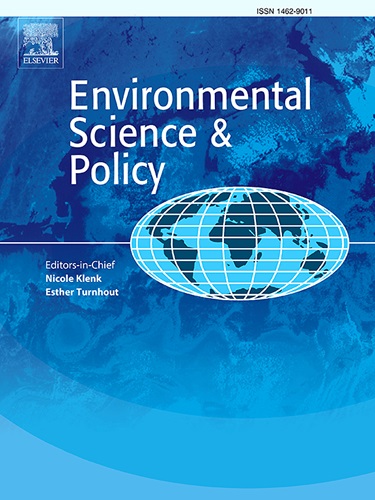Environmental management using a digital twin
IF 4.9
2区 环境科学与生态学
Q1 ENVIRONMENTAL SCIENCES
引用次数: 0
Abstract
Robust environmental management is based on evidence of ecosystem health and anthropogenic harms gleaned from successful environmental monitoring. Successful monitoring involves the synthesis of observations from a variety of sources to represent a site in its current and past states, the anticipation of future conditions, and communicate the findings to decision-makers for environmental management and other stakeholders; a lack of such synthesis and communication has been identified as a shortcoming in Environmental Impact Assessment. However, a suitable digital platform for this synthesis and communication has not yet been developed. Digital twins, an approach from engineering, may offer a solution with advantages over other approaches traditionally employed in ecosystem monitoring. Here a process and considerations for conducting the use case analysis of a digital twin for environmental monitoring is presented, including identifying users, establishing their requirements, refining use cases based on data practicalities, planning analyses and data/model integrations, and developing the user interface. The process is demonstrated using a case study, developing use cases for an ecological digital twin of a UK Marine Protected Area, which could be generalised as use cases for a digital twin for ecosystem monitoring of a conservation area. Considerations for constructing a digital twin based on these use cases are discussed, including the practicalities of using remotely-sensed biological data; gaps in the scientific, technological and data management capabilities; the role of expertise in adding value beyond simple data collation data; and federation of digital twins. Finally, challenges and benefits to using a digital twin approach to informing conservation management are summarised.
使用数字孪生的环境管理
强有力的环境管理是基于从成功的环境监测中收集到的生态系统健康和人为危害的证据。成功的监测包括综合各种来源的观察结果,以代表一个场所的当前和过去状态,对未来条件的预测,并将结果传达给环境管理的决策者和其他利益相关者;缺乏这种综合和交流已被确定为环境影响评估的一个缺点。然而,目前还没有一个合适的数字平台来进行这种综合和交流。数字孪生,一种来自工程的方法,可能提供一种比传统上用于生态系统监测的其他方法更有优势的解决方案。本文介绍了进行环境监测数字孪生用例分析的过程和注意事项,包括识别用户,建立他们的需求,根据数据实用性改进用例,规划分析和数据/模型集成,以及开发用户界面。该过程通过案例研究进行演示,为英国海洋保护区的生态数字双胞胎开发用例,这可以概括为保护区生态系统监测的数字双胞胎用例。讨论了基于这些用例构建数字孪生的考虑因素,包括使用遥感生物数据的实用性;科学、技术和数据管理能力的差距;除了简单的数据整理之外,专业知识在增加价值方面的作用;还有数字孪生联盟。最后,总结了使用数字孪生方法为保护管理提供信息的挑战和好处。
本文章由计算机程序翻译,如有差异,请以英文原文为准。
求助全文
约1分钟内获得全文
求助全文
来源期刊

Environmental Science & Policy
环境科学-环境科学
CiteScore
10.90
自引率
8.30%
发文量
332
审稿时长
68 days
期刊介绍:
Environmental Science & Policy promotes communication among government, business and industry, academia, and non-governmental organisations who are instrumental in the solution of environmental problems. It also seeks to advance interdisciplinary research of policy relevance on environmental issues such as climate change, biodiversity, environmental pollution and wastes, renewable and non-renewable natural resources, sustainability, and the interactions among these issues. The journal emphasises the linkages between these environmental issues and social and economic issues such as production, transport, consumption, growth, demographic changes, well-being, and health. However, the subject coverage will not be restricted to these issues and the introduction of new dimensions will be encouraged.
 求助内容:
求助内容: 应助结果提醒方式:
应助结果提醒方式:


